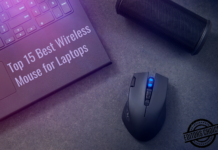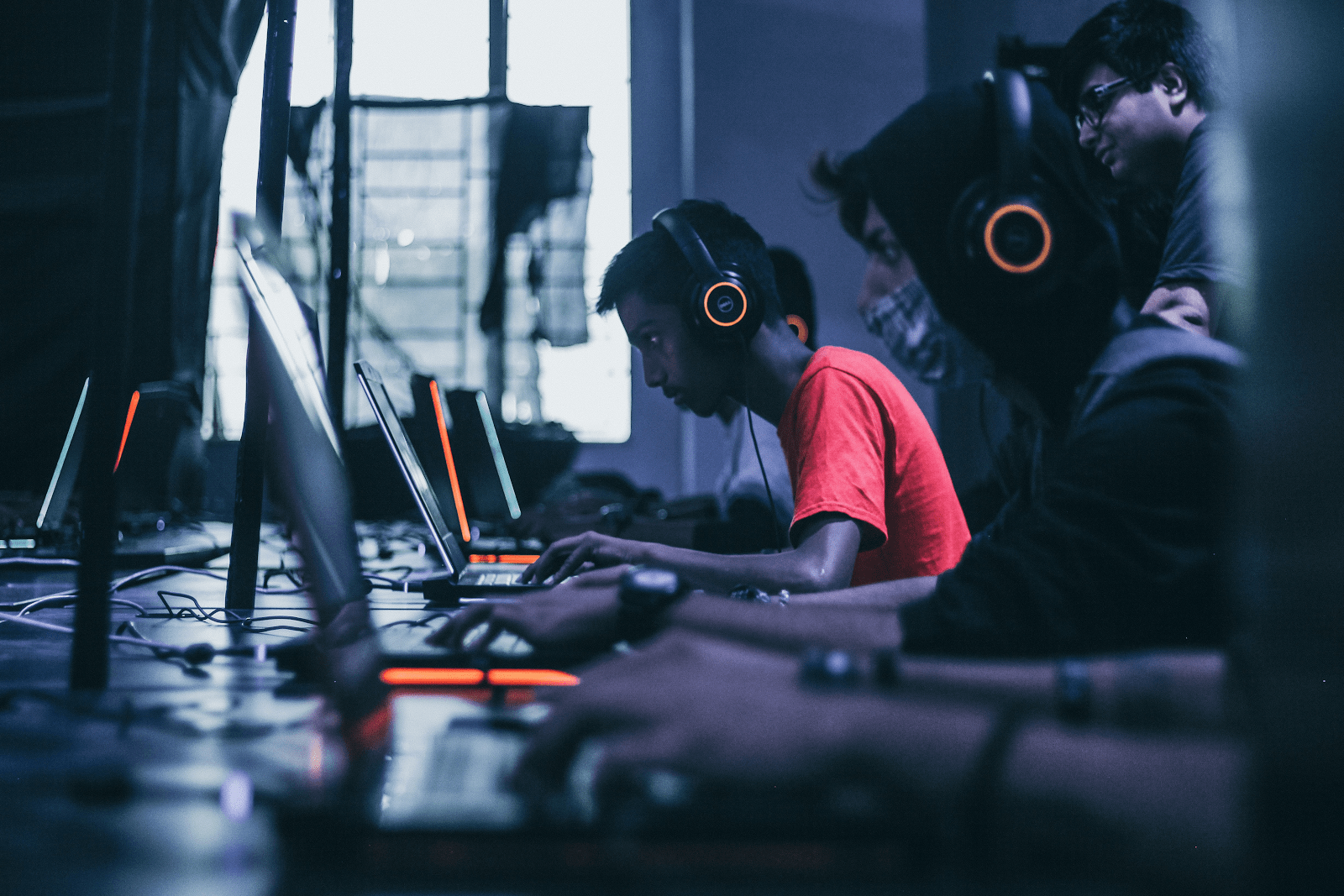Looking to stay ahead of the gaming curve in 2024? Well, you’re not alone. Did you know that the global gaming industry is projected to reach a staggering $256.97 billion by 2025? With such exponential growth, it’s no wonder that gaming laptops are becoming increasingly popular.
But with so many options available, how do you choose the right one for you? In this guide, we’ll delve into the latest trends and advancements in gaming laptops, helping you navigate through the maze of choices and find the perfect gaming companion.
So, whether you’re a competitive gamer or simply enjoy playing in your spare time, get ready to discover the best gaming laptops of 2024 and level up your gaming experience like never before.
Table of Contents
Key Takeaways
- Gaming laptops have evolved to become thinner, lighter, and more powerful, offering advanced CPUs and GPUs for efficient performance.
- There are options available for every budget, from affordable entry-level gaming laptops to premium high-end notebooks.
- When choosing a gaming laptop, it’s important to consider factors such as CPU and GPU choices, screen size and refresh rate, as well as sync technologies like G-SYNC and FreeSync.
- While gaming laptops offer portable gaming options, they are not meant to replace desktops, and understanding the differences between desktop and laptop hardware is crucial when making a decision.
Budget Gaming Laptops
Budget gaming laptops offer an affordable option for casual gamers who are seeking a cost-effective solution. These laptops, typically priced under $1,000, provide a balance between performance and affordability. While they may have lower build quality and limited RAM and storage compared to their more expensive counterparts, budget gaming laptops can handle most games at 1080p and 60 frames per second.
One example of a reliable and affordable gaming laptop is Dell’s G15 lineup. These laptops offer a cost-effective option for casual gamers who are looking to enjoy their favorite games without breaking the bank.
It’s important to note that while budget gaming laptops may not have all the bells and whistles of higher-end models, they still provide a solid gaming experience for those on a tight budget. They offer a gateway into the world of gaming without requiring a significant financial investment.
Mid-Range and Premium Gaming Laptops
When it comes to mid-range and premium gaming laptops, you can expect better build quality, improved graphics power, and ample RAM and storage compared to budget options. These laptops offer a higher level of performance and are designed to meet the needs of serious gamers who want a more immersive and enjoyable gaming experience.
Here is a comparison table of some popular mid-range and premium gaming laptops:
| Laptop | Key Features |
|---|---|
| ASUS Zephyrus ROG G14 | Excellent build quality, powerful graphics, and ample storage |
| Razer Blade | Thin and sleek design, top-of-the-line hardware |
| Alienware Area 51m | High-end performance, customizable options |
Mid-range gaming laptops, priced around $1,000 and higher, strike a balance between performance and affordability. They offer a significant upgrade from budget options and are suitable for most gamers. On the other hand, premium gaming laptops, priced around $1,800 or more, provide top-of-the-line performance and customization options. They feature impeccable design and the fastest hardware available.
When considering a mid-range or premium gaming laptop, it’s crucial to take into account factors such as CPU and GPU choices, screen size, refresh rate, and sync technologies. These specifications will determine the overall gaming experience and whether the laptop can handle the latest games with ease.
CPU and GPU Choices
Moving on to the next aspect of gaming laptops, let’s now explore the crucial choices you need to make when it comes to the CPU and GPU.
These components play a significant role in determining the performance and capabilities of your gaming laptop. Here are some key factors to consider:
- AMD’s Ryzen notebook processors: These offer multitasking capabilities at a lower cost, making them a popular choice for budget-conscious gamers.
- Intel’s 12th and 13th-gen chips: These provide impressive performance and a range of options, making them suitable for gamers who prioritize power and flexibility.
- AMD’s Radeon RX 6000M GPU: While it competes well with NVIDIA in overall performance, it lags behind in ray tracing capabilities.
- NVIDIA video cards: These offer better optimized ray tracing technology, which can enhance the visual quality of games.
- NVIDIA GeForce RTX GPUs: These feature DLSS technology for upscaling games, providing smoother gameplay and improved performance.
When making your CPU and GPU choices, it’s important to consider your budget, gaming preferences, and desired level of performance. Ultimately, the right combination of CPU and GPU will ensure that your gaming laptop can handle the latest games and deliver an immersive gaming experience.
Screen, Refresh Rate, and Sync Technologies
To ensure an optimal gaming experience, it’s crucial to consider the screen size, refresh rate, and sync technologies of your gaming laptop.
The screen size plays a significant role in balancing immersion and portability. 15-inch laptops offer a good balance, while larger 17-inch models provide more screen real estate at the cost of increased weight. However, it’s important to note that 13-inch gaming laptops tend to be more expensive than their 15-inch counterparts.
When it comes to refresh rate, a minimum of 120Hz is recommended for gaming laptops. Higher refresh rates like 144Hz, 240Hz, and 360Hz offer smoother gameplay and reduce motion blur.
For sync technologies, NVIDIA’s G-SYNC and AMD’s FreeSync are popular options. These technologies match the screen’s refresh rate with the game’s framerate, reducing screen tearing and improving gameplay smoothness. While G-SYNC and FreeSync are additional features for high refresh rate monitors, they enhance the gaming experience on gaming laptops. However, they aren’t necessary for everyone and offer only a slight visual improvement.
Considering the screen size, refresh rate, and sync technologies will help you choose a gaming laptop that meets your specific gaming needs and preferences, providing an immersive and smooth gaming experience.
Comparison With Desktop Hardware
Now let’s explore how gaming laptops compare to desktop hardware when it comes to performance and capabilities.
- Portability: Gaming laptops offer the advantage of being portable, allowing you to take your gaming experience on the go. Desktops, on the other hand, are stationary and not easily transportable.
- Upgradability: Desktop hardware provides more flexibility for upgrades, allowing you to easily swap out components such as the CPU, GPU, and RAM. Gaming laptops, while some models allow for limited upgrades, generally have more restricted upgrade options.
- Power and Performance: Desktop hardware tends to offer more raw power and performance capabilities compared to gaming laptops. This is due to the limitations of cooling and power consumption in a smaller form factor.
- Price: Gaming laptops are generally more expensive compared to desktop hardware with similar specifications. The compact design and specialized components contribute to the higher cost.
- Customization: Desktop hardware provides more customization options, allowing you to choose specific components and build your system according to your preferences. Gaming laptops, while they do offer some customization options, have more limited choices.
When comparing gaming laptops to desktop hardware, it’s important to consider your priorities, such as portability, upgradability, power, price, and customization. Understanding these differences will help you make an informed decision when choosing between a gaming laptop and a desktop for your gaming needs.
Frequently Asked Questions
What Are the Key Factors to Consider When Buying a Gaming Laptop?
When buying a gaming laptop, consider factors like GPU capability, screen size, resolution, panel technology, and G-Sync/FreeSync support. Also, think about the keyboard and trackpad features that suit your preferences for usability and comfort.
Is It Necessary to Have G-Sync or Freesync Support in a Gaming Laptop?
Having G-Sync or FreeSync support in a gaming laptop is not necessary, but it can enhance your gaming experience. These technologies reduce screen tearing and improve gameplay smoothness, especially when paired with high-refresh rate monitors.
How Does RAM Affect the Performance of a Gaming Laptop?
RAM is crucial for gaming laptop performance. More RAM allows for smoother multitasking and faster loading times. It helps games run smoothly by storing temporary data. Aim for at least 8GB, but 16GB or more is recommended for optimal gaming experience.
How Many CPU Cores Should a Gaming Laptop Have for Optimal Performance?
For optimal performance in a gaming laptop, it is recommended to have at least six CPU cores. This allows for efficient multitasking and smoother gameplay, ensuring a more enjoyable gaming experience.
What Is the Importance of GPU Selection in a Gaming Laptop?
The importance of GPU selection in a gaming laptop is crucial as it determines the graphics performance and visual quality of games. A powerful GPU can handle demanding games and provide smooth gameplay with high frame rates and realistic visuals.
Conclusion
In conclusion, the gaming laptop market is booming with options for every budget and preference.
With advanced CPUs and GPUs, innovative designs, and customizable features, these laptops offer efficient performance without sacrificing portability.
Whether you’re a professional or a casual gamer, there’s a perfect gaming laptop out there for you.
So don’t wait, level up your gaming experience and dive into a world of endless possibilities with the right gaming laptop, because gaming has never been this exciting!






























![4 Ways to Hack a WiFi Password on Android in 2023 [No Root] TechSaaz - how to hack a wifi password on android](https://www.techsaaz.com/wp-content/uploads/2019/08/how-to-hack-wifi-on-android-100x70.jpg)


